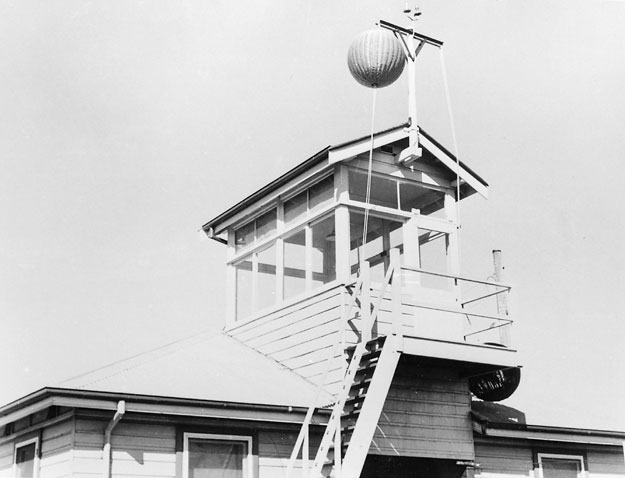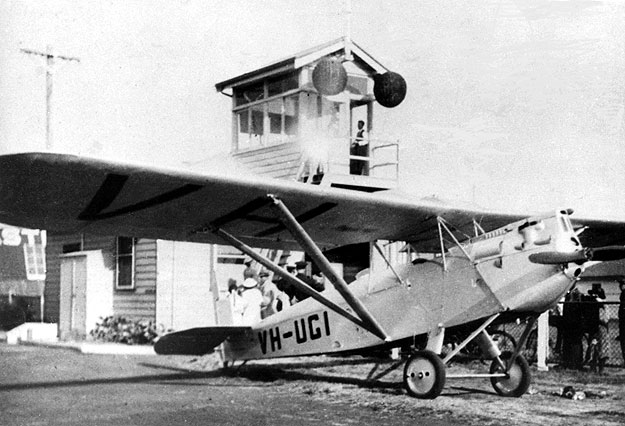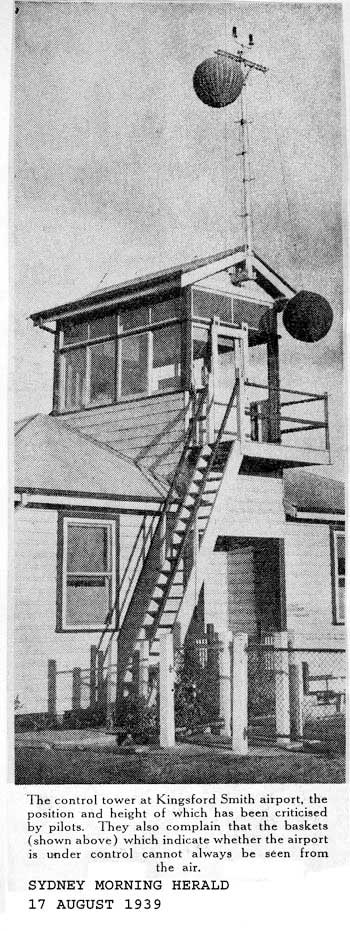
The first Control Tower, of simple wooden construction, at Sydney’s Mascot aerodrome (later Kingsford Smith International Airport) was commissioned in 1937. The 'Tower'
was built into the roof of the Aero Club building as the photos above and below show.
A similar but rather cruder 'Tower' was also constructed at Melbourne/Essendon.

The Aerodrome Control Officer relied on visual signals for the control of traffic. These included coloured cane balls, seen in the images above and below, which could be hoisted or lowered to indicate certain aerodrome conditions. Flares fired by Very pistol were also an important signalling device which survived into the 1950s. However, in those days of all-over grass fields one of the main jobs of the Control Officer was to ensure that the 'Wind T' ground signal accurately reflected the wind direction or, where there was no wind, the 'no wind' preferred landing and takeoff direction.
The aircraft in the photo below is Westland Widgeon III VH-UGI (c/n WA.1681). This aircraft was first registered in September 1927, however after spending some years in New Guinea its registration lapsed in November 1936. It returned to Australia and was re-registered in June 1937 to well-known Sydney aviation identity Sid Marshall. Its Certificate of Airworthiness lapsed in 1941 and it was struck off the Register in 1947, probably as part of a post-War Register clean-up. Happily this venerable Widgeon later went through an extensive restoration to airworthy condition. It is currently the only example left still airworthy and resides at owner, former CAA Chairman Dick Smith's farm near Canberra.


Left: By 1939 the Tower was subject to complaint by some pilots, as reported in this newspaper story. However, a new and much more impressive Tower was opened a year later, in 1940.
Photos: CAHS collection / Newspaper clipping: Roger McDonald collection)
Read about the use of visual signals for the control of aerodrome traffic
Read about the history of Control Towers
Back to the
main Air Traffic Services
index page
Back to the Items of General Interest index
If this page appears without a menu bar at top and left, click
here